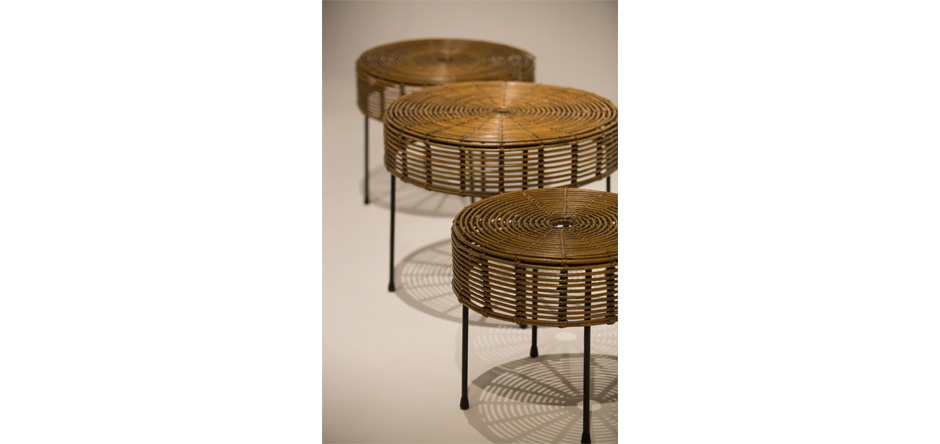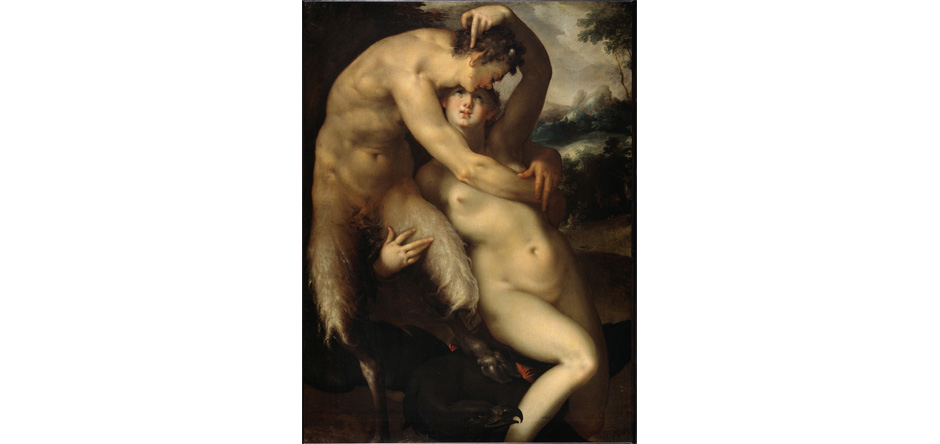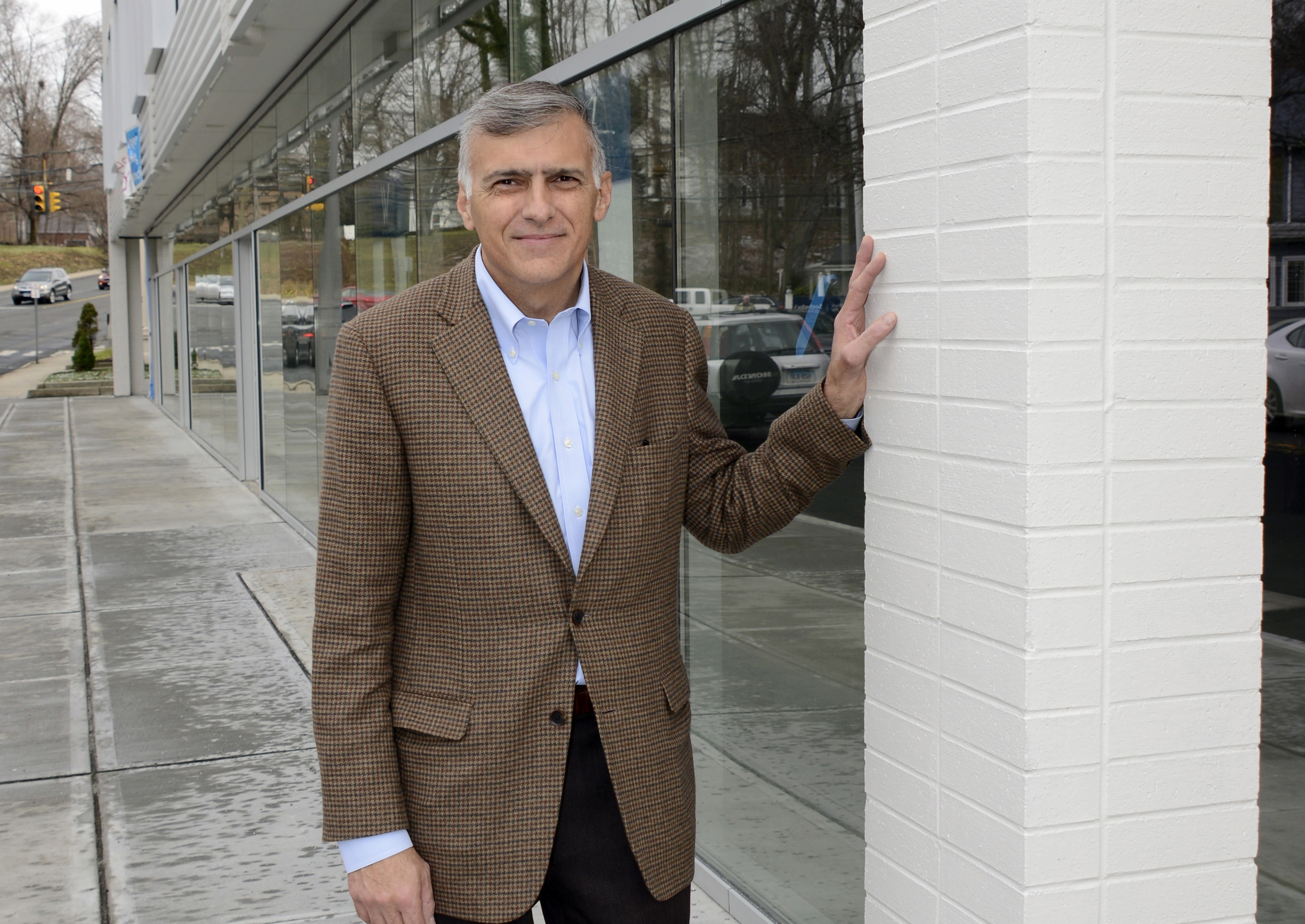Photographs courtesy The Museum of Arts and Design.
In recent years, there has been a newfound interest in all things artisanal.
This growing respect for works made by hand has given renewed value to everything from a charming little watercolor to an intricately beaded necklace.
Aileen Osborn Webb would likely smile at this turn of events.
After all, it’s the kind of appreciation that Webb cultivated throughout her life (1892-1979), one fueled by her passion for crafts.
Webb’s legacy is being celebrated at The Museum of Arts and Design in Manhattan, where “What Would Mrs. Webb Do? A Founder’s Vision,” continues.
Webb established MAD – then called the Museum of Contemporary Crafts – in 1956.
The exhibition, organized by adjunct curator Jeannine Falino of New Rochelle and curatorial assistant Barbara Gifford, is described by the museum as one “highlighting Webb’s advocacy and dedication to skilled makers across America and featuring objects drawn largely from the museum’s permanent collection.”
It’s a varied show, one that reaches from the historic through the contemporary. And sometimes, with groundbreaking work on display, the eras seem to blend, proving that true style endures – something Webb understood.
Webb was born in Garrison to an art collector father and philanthropist/social reformer mother and raised with a strong sense of the importance of both education and the arts. She would marry Vanderbilt Webb, a great-grandson of Cornelius Vanderbilt.
“She was born into privilege,” Falino says. “Her father was a very prominent New Yorker.”
There was, though, always a sense of the need to give back.
“She grew up understanding an obligation,” Falino says. “There was an implied obligation to help people.”
It was in 1936 that Webb launched Putnam County Products to sell “country items,” including amateur pottery produced by rural residents who needed money.
“She realized people were bringing in handicrafts that were beautiful, had beautiful construction,” Falino says.
That grew into marketing and further organizing, with America House opening in 1940 in New York City as an outlet for members to sell their work. Webb would also be instrumental in creating magazines, scholarly programs and other organizations.
“It kind of grew organically,” Falino says.
“She had the commitment to stay” the course, she adds, something the exhibition clearly traces.
The first half of the exhibition spotlights work by American makers from the 1950s through the ’60s whose work directly benefitted from the support of Webb and like-minded individuals. Also featured are the institutions Webb launched, from the American Craft Council to the School of American Craftsmen to the World Crafts Council. The museum under her direction is also spotlighted, with a focus on “Objects: USA,” a landmark exhibit that debuted in 1969 and would travel to 30 other museums in America and abroad.
The second half of the exhibit is dedicated to those who carry on in Webb’s footsteps, showcasing advocates and institutions that continue to support makers.
In total, there are some 100 works in glass, ceramics, wood, metals and fiber representing “makers” – artists and artisans – from textile legend Jack Lenor Larsen to ceramicists Peter Voulkos and Jun Kaneko.
Falino says the Webb exhibition has proven particularly rewarding. Her affinity for the topic and era was demonstrated in “Crafting Modernism: Midcentury American Art and Design,” a 2011-12 exhibition at MAD that Falino says was likely instrumental in her being tapped for the Webb show.
“I had a lot of that in my pocket about that period,” she says of her background.
The Webb show came about, Falino says, soon after Glenn Adamson began his tenure as MAD director in October 2013.
“He really wanted to set Mrs. Webb’s legacy straight, because she’s been forgotten,” Falino says.
There was a feeling, she adds, that it was time to put the spotlight on “her absolutely essential and seminal role” not only in founding the museum but promoting craft in general.
“She was extraordinary,” Falino says.
Webb also was, Falino adds, an artist, though her own work was done “for sheer pleasure.”
“It gave her a sense of understanding” those whose work she supported.
In the show, for example, one of Webb’s humble creations is displayed near a more skilled ceramic piece that she owned, a way “for us to just appreciate her empathy,” Falino says.
Throughout, there is a vivid connection encouraged between the viewer and the object.
“The museum is fortunate in that we have a lot of tremendous objects to back up the story,” Falino says.
So are more people discovering not only “Mrs. Webb,” but the treasures of MAD’s collection?
“I certainly hope so,” Falino says. “When I’ve given my talks, I think people are very responsive.”
And, she adds, the show’s catchy name doesn’t hurt.
“I think the title of the show, actually Glenn’s title, has been a lot of fun,” Falino says.
It’s not, she says, at all religious – though it does play on the “What Would Jesus Do?” phrase. She says it instead offers a “subtle kind of moral imperative” as to how the museum needs to continue the work of Webb.
“There is an invocation that there is some good she is doing,” something that needs to carry on, Falino says.
“Museums, like so many nonprofit organizations, we don’t really survive without the help of dedicated people like Mrs. Webb.”
“What Would Mrs. Webb Do? A Founder’s Vision” continues through Feb. 8 at The Museum of Arts and Design at 2 Columbus Circle in Manhattan. For more, visit madmuseum.org.





